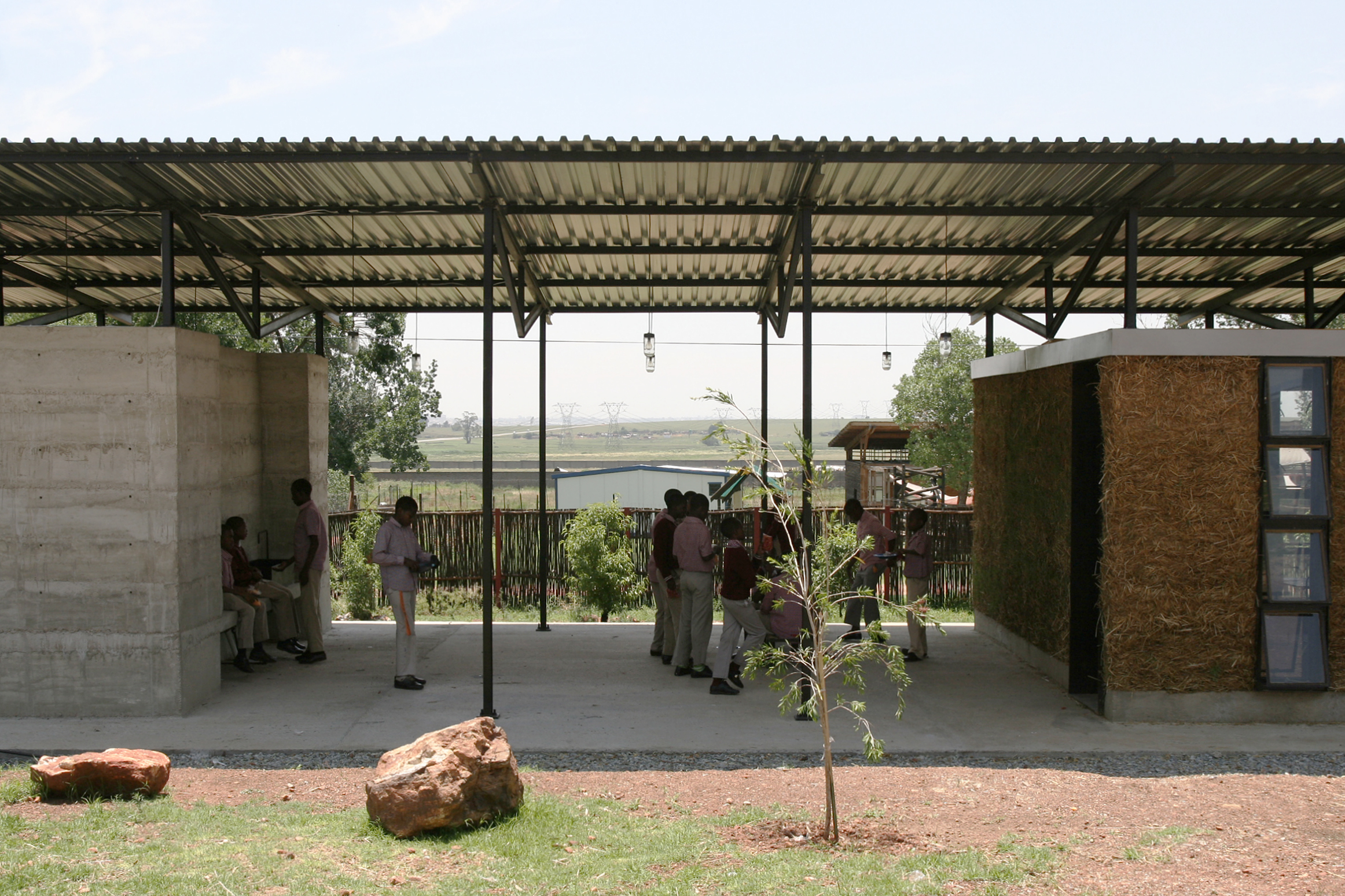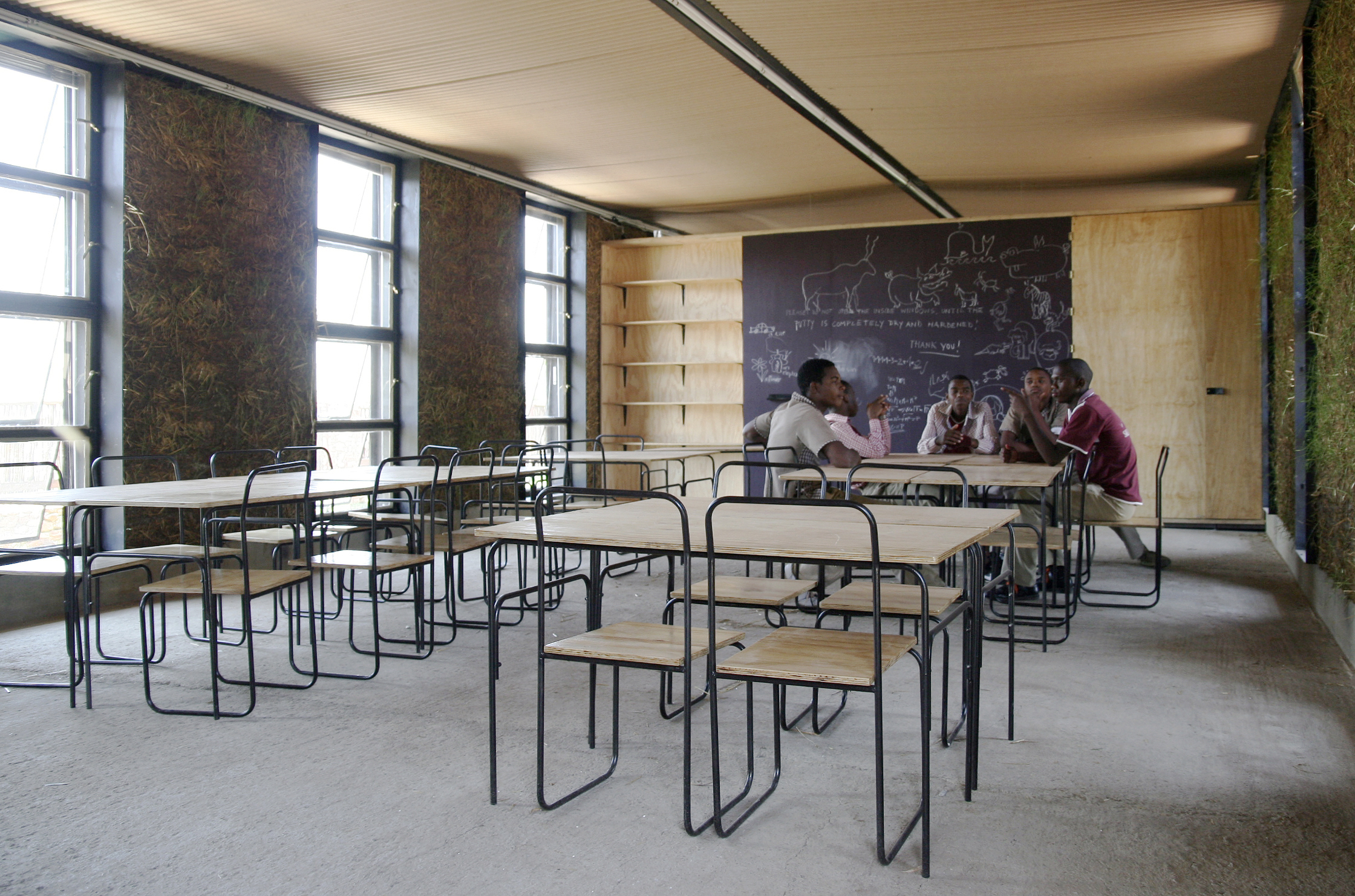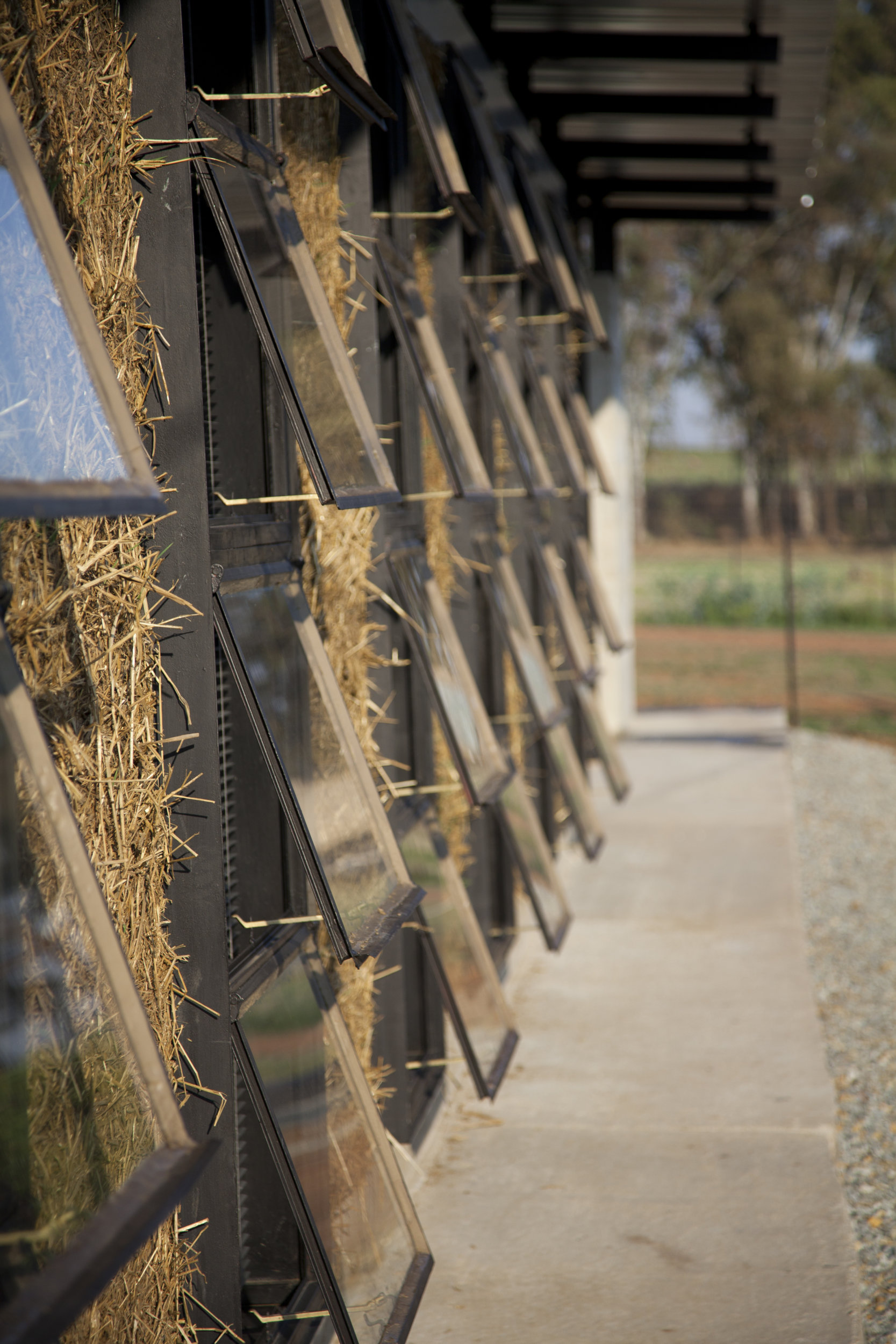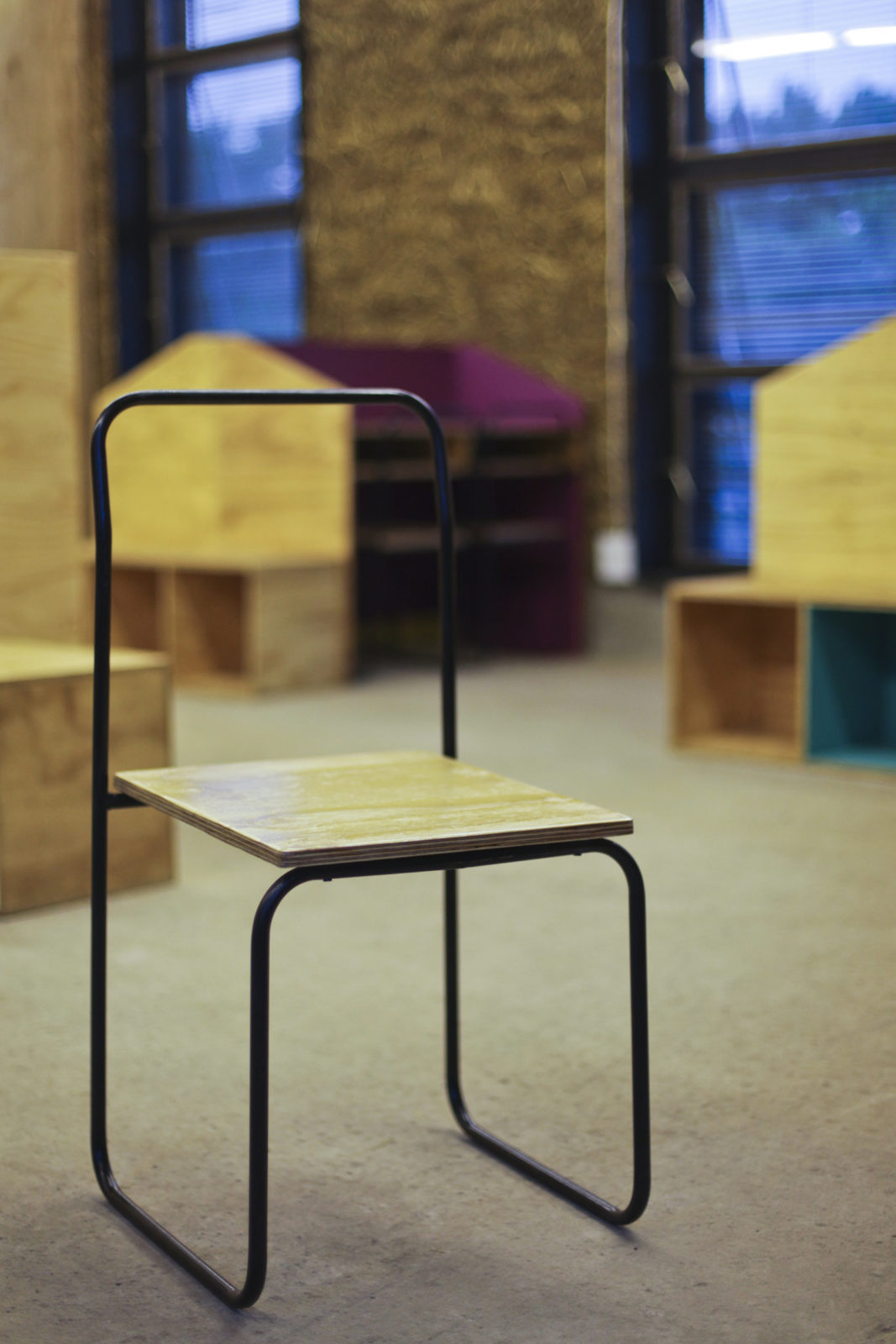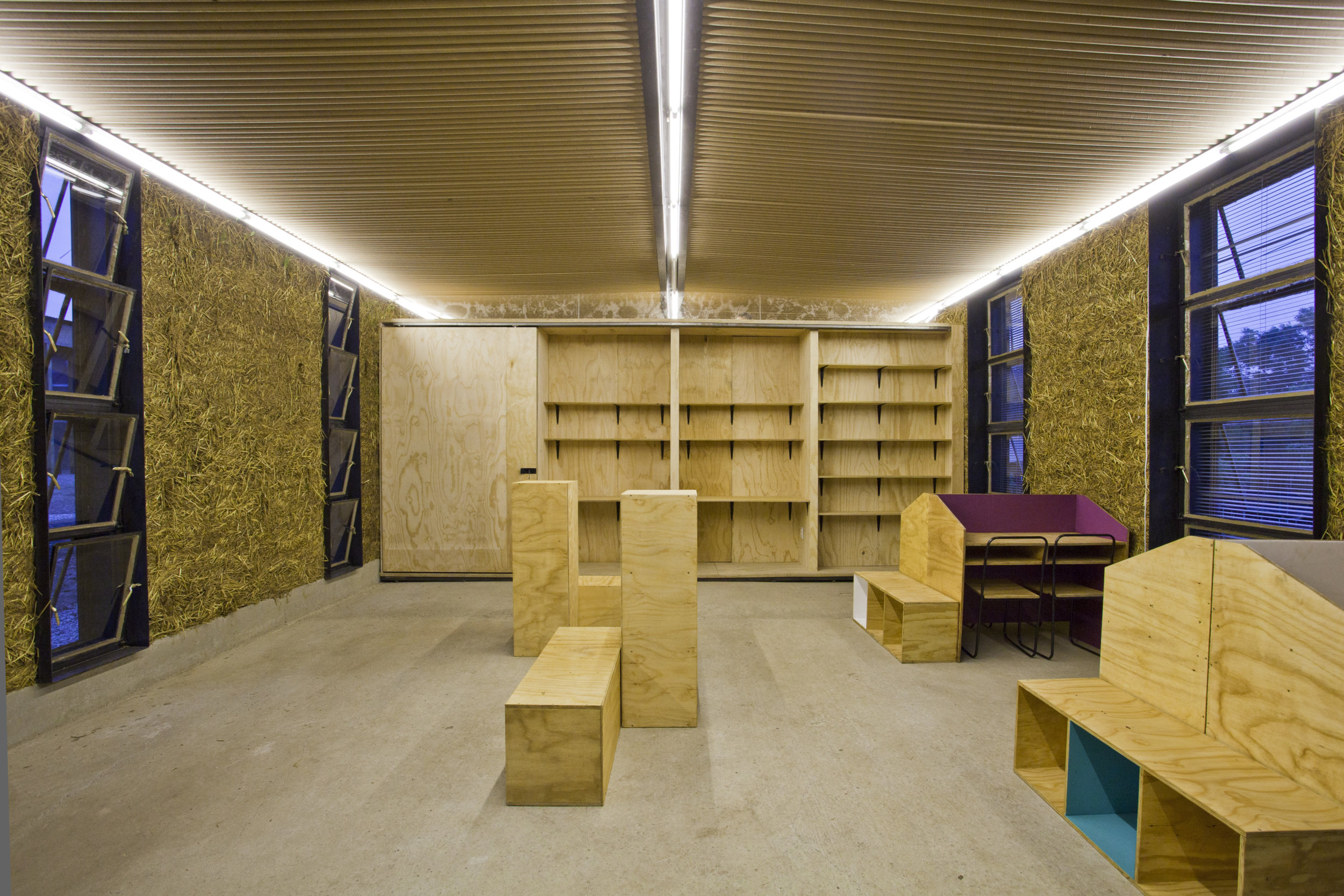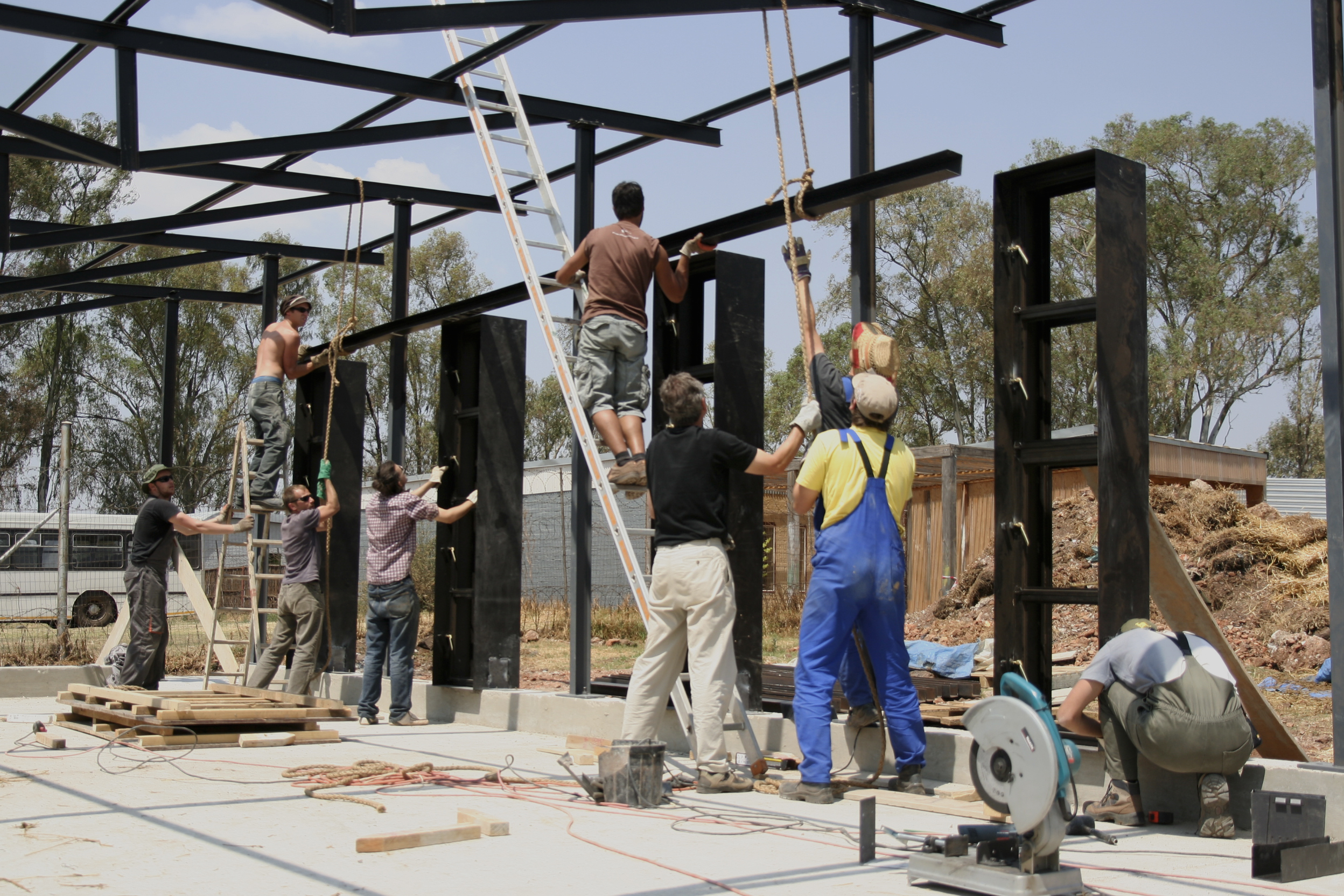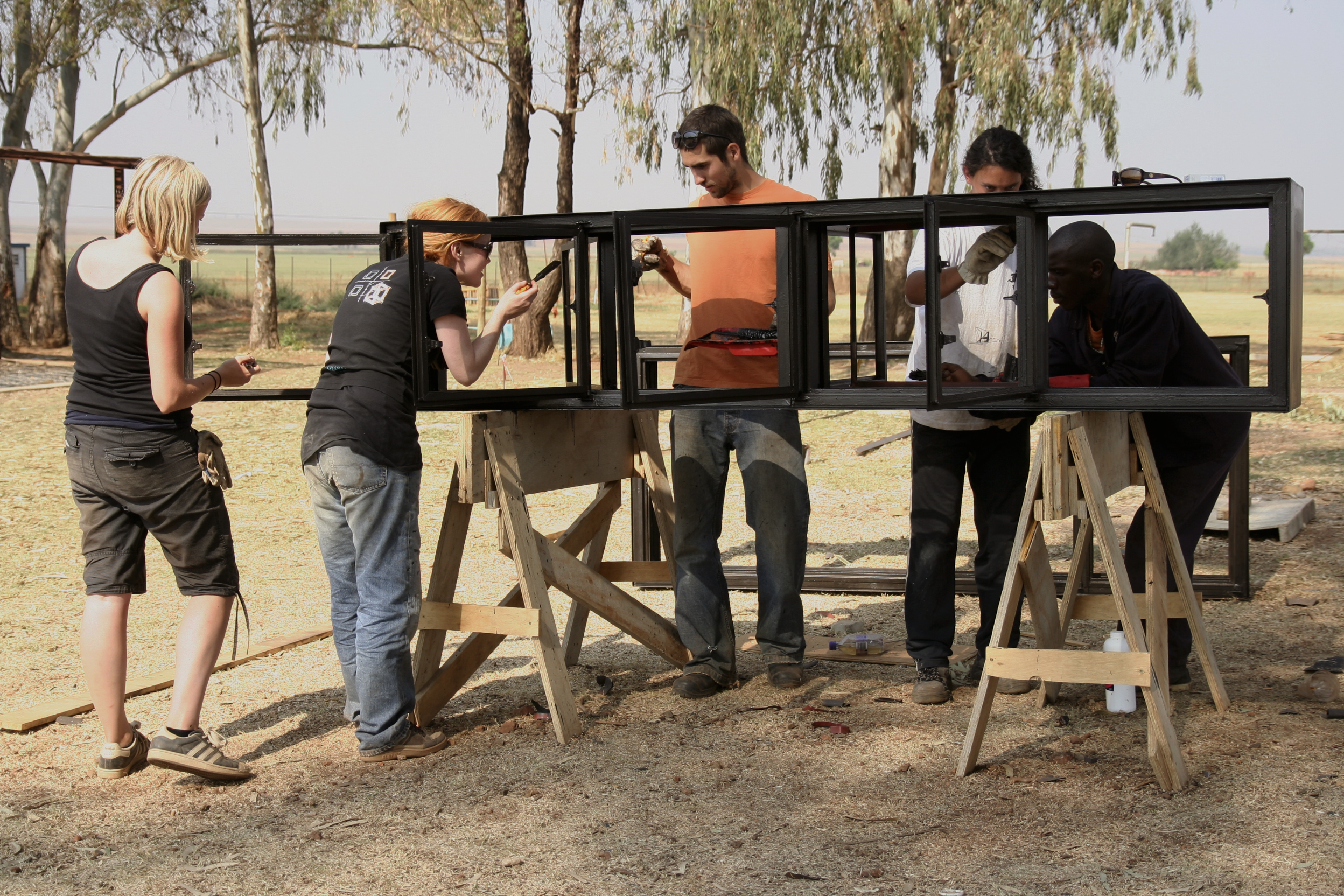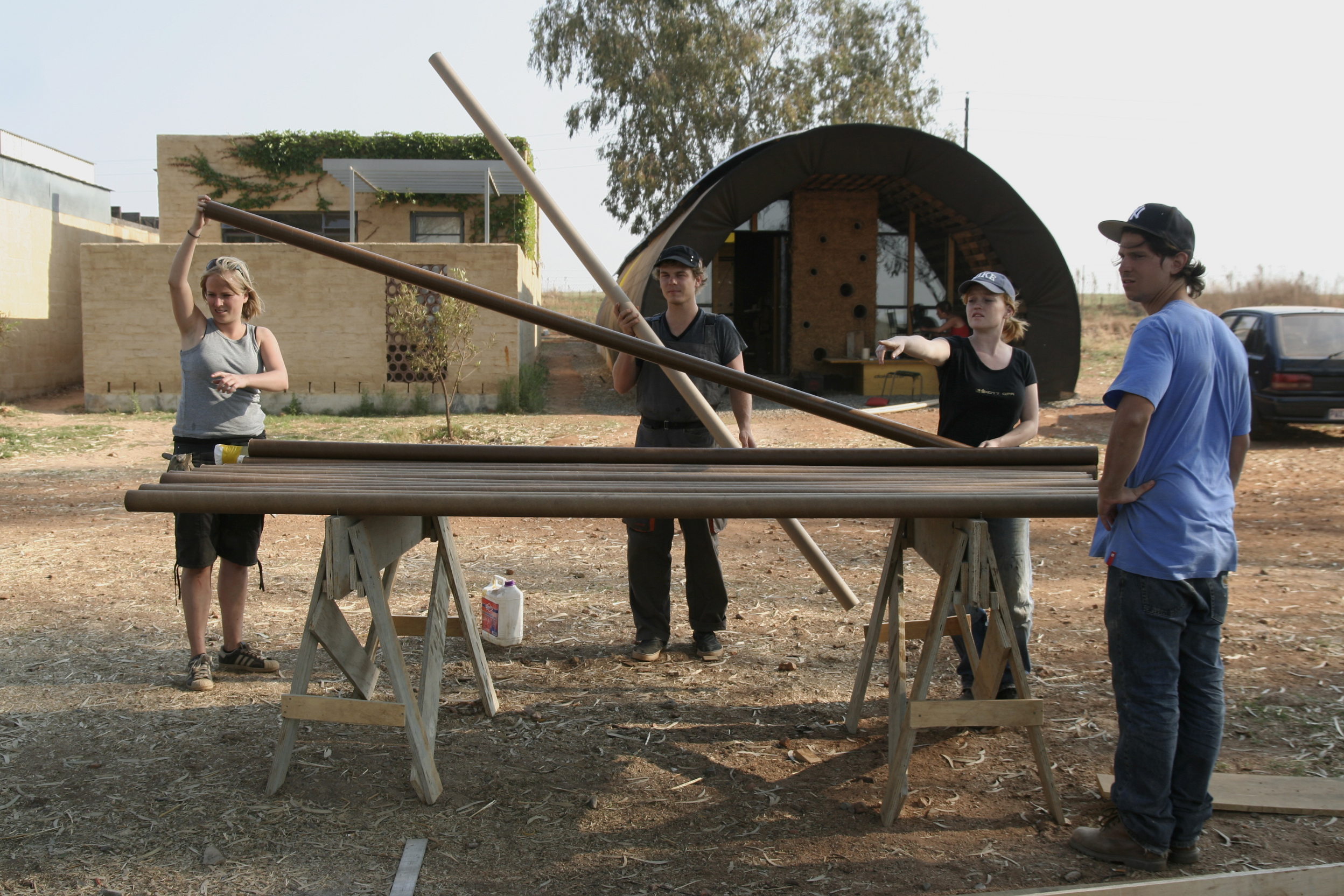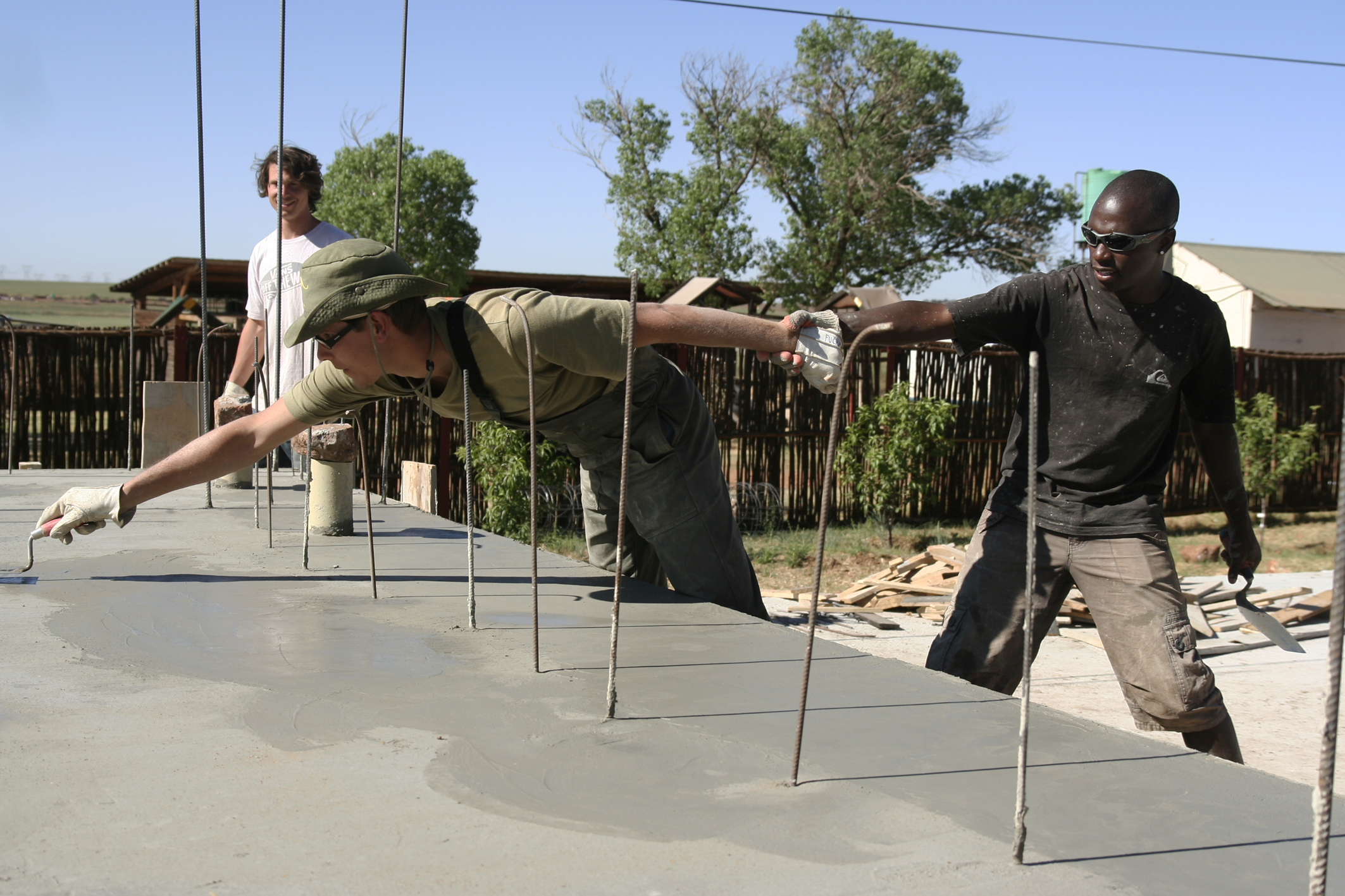Classroom and library, Ithuba Skills College
Construction: Sep–Oct 2010 (Johannesburg, SA)
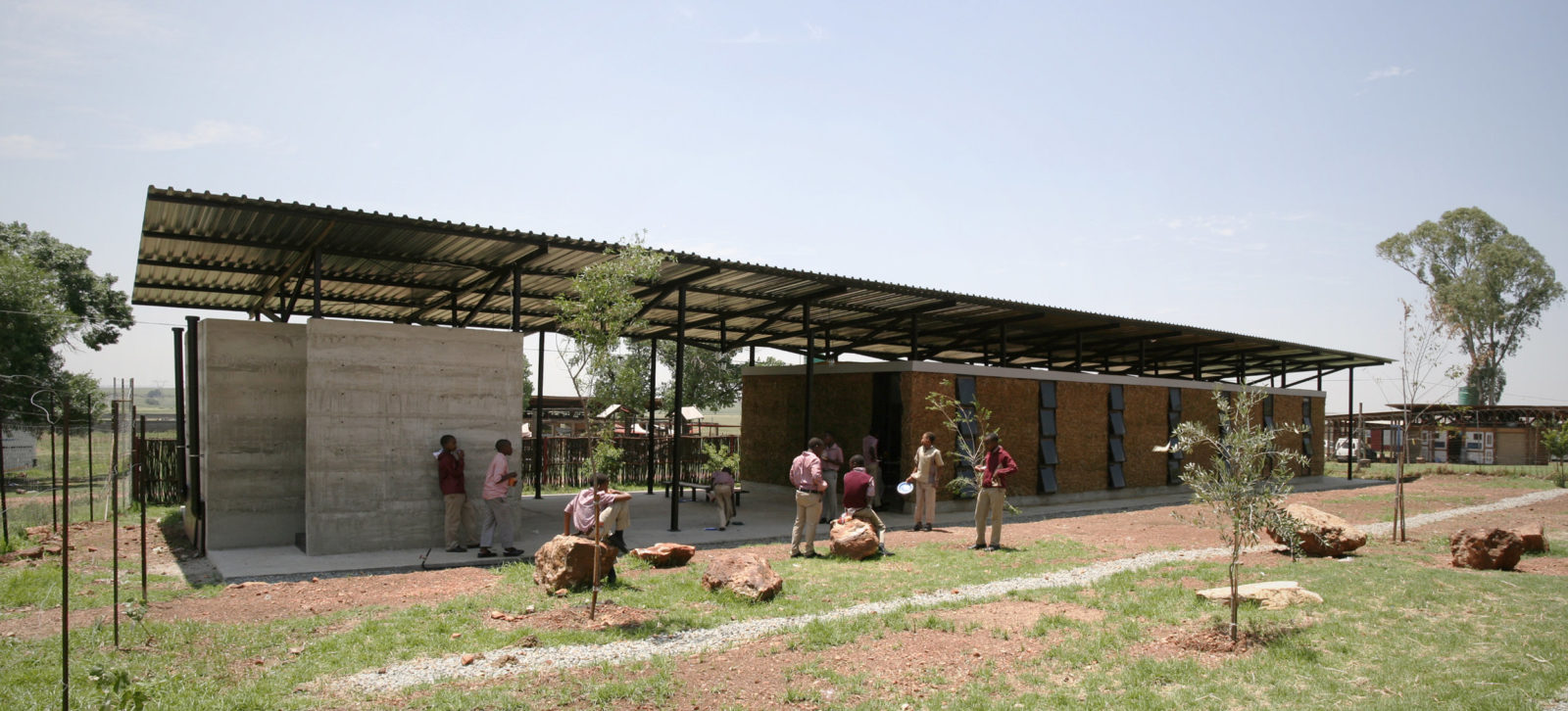
The Ithuba Skills College is a vocational school established by the Austrian SARCH foundation in the Magagula Heights Township, a shantytown suburb of Johannesburg. Attendance at the school is free and planned primarily for children from the surrounding areas. All the buildings in Ithuba – the classrooms, workshops, a hall, and housing for teachers – were constructed between 2004 and 2011 by students from various European architectural schools. In 2010, a team from the Faculty of Architecture at the University of Ljubljana designed and constructed a classroom and a library.
Design work on the buildings was finished at the faculty during the winter semester, while construction work in Johannesburg started during the autumn, taking 8 weeks to complete. The construction team collaborated with local workers and students from Ithuba, with the aim of sharing knowledge and transferring ideas into the local architecture. Construction methods and materials were affordable and accessible to the locals. The framework was made out of steel and the walls built in a traditional African style, using mud and straw construction. The roof is composed of lightweight metal sheets.
Climate presented one of the most important factors in the design, as winters in South Africa are very cold, while the summers are hot. The walls of straw and mud carry excellent thermal properties, contributing to both passive heating in winter as well as cooling in the summer. Both are facilitated by double-glazed windows and an air gap underneath the floating roof. The indoor areas warm quickly on cold winter mornings and cool down just as fast in the summer, creating a comfortable environment for learning and reading.
